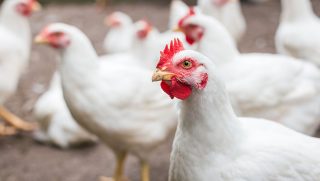Late last week news broke that seed cotton, unginned upland cotton — which consists of the seed with the attached lint as picked from the boll — was being added back into Title I coverage under the Farm Bill to the joy of producers across the nation. This means the commodity will be eligible for Price Loss Coverage and Agriculture Risk Coverage effective with the 2018 crop. Cotton growers were left out of the list of commodities covered when PLC and ARC were introduced in the 2014 bill, due to a World Trade Organization ruling that favored Brazil over the U.S. in cotton subsidies.
Since then, farmers have been fighting to get cotton added to the Title I commodity as an oilseed. This is crucial to protect farmers should disaster hit, or prices fall, as has occurred in recent years. The Stacked Income Protection Plan was implemented as an alternative for cotton producers to the Title I coverage, but many farmers have felt this program to be inadequate and have wanted to end the program. Under the new policy, farmers can rest easier, knowing they have better protection under the PLC and ARC programs.
PLC is an insurance program that pays producers and owners, if a commodity’s national average price is below its reference price, while ARC-CO provides coverage at the County level. That is, when the county revenue of a covered commodity is less than the ARC-CO guarantee for the covered commodity, the coverage is issued to producers.
The program applies only to farms with a Generic Base and that have planted cotton, or a covered commodity, between 2009 and 2016. “Base acres,” refers to “A farm’s crop-specific acreage of wheat, feed grains, rice, oilseeds, pulse crops, or peanuts eligible used for FSA program purposes.” Base acres do not necessarily align with current plantings. Upland cotton base acres on the farm are renamed “generic” base acres, according to the USDA. While “Generic base acres,” formerly called upland cotton base acres, are “not involved in, or subject to, base acre reallocation. If generic base acres are planted to a covered commodity in a given year, then those acres are considered base acres for that planted covered commodity in that crop year. For example, if a farm with 500 generic base acres plants 250 of those generic base acres to corn, and the farm elected ARC-County Coverage for corn, then those 250 generic base acres are treated as corn base in that crop year and receive an ARC-County Coverage payment if one is triggered.”
This allows farmers a safety net until the 2018 Farm Bill is finalized. Cotton producers hope to keep the commodity covered under Title I, to ensure continued risk coverage after 2018.
Markie Hageman is a senior, majoring in agribusiness, at Fort Hays State University. She is actively involved in her state Cattlemen’s Association, Young Farmers chapter, and National Cattlemen’s Beef Association. Follow her series exploring various parts of the next Farm Bill.



